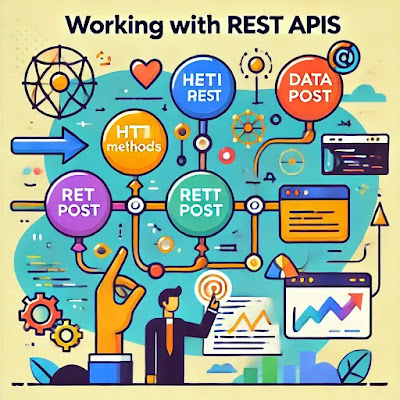Introduction to Bootstrap: Rapid Prototyping Your Website
Introduction to Bootstrap: Rapid Prototyping Your Website
When it comes to web development, creating responsive and visually appealing websites is critical. In today’s fast-paced world, web developers need to build websites that look good on all devices without spending too much time on designing and coding the structure from scratch. Bootstrap is a front-end framework that allows developers to do just that, streamlining the process of prototyping websites with minimal effort.
In this article, we’ll explore what Bootstrap is, how it works, and why it's an essential tool for both beginners and experienced developers. By the end, you'll have a solid understanding of Bootstrap’s components and how it helps in building responsive websites efficiently.
What is Bootstrap?
Bootstrap is an open-source front-end framework that was originally developed by Twitter. It provides pre-designed components, such as buttons, forms, and grids, that developers can use to quickly design and prototype responsive websites. Bootstrap’s primary goal is to reduce the amount of time it takes to create a website while ensuring that the website is mobile-friendly and looks professional.
It follows a mobile-first approach, meaning that websites built with Bootstrap are automatically optimized for mobile devices, and additional styling can be applied for larger screens. This saves developers a great deal of time, especially when developing for multiple screen sizes.
Why Use Bootstrap?
There are several reasons why Bootstrap is a popular choice among developers:
- Time-Saving: Bootstrap comes with pre-built CSS and JavaScript components, so developers don’t have to start from scratch.
- Responsive Design: Bootstrap's grid system ensures that websites look good on all screen sizes, from smartphones to desktops.
- Customizable: While Bootstrap provides default styling, it also allows developers to customize and extend these styles to suit the project’s needs.
- Cross-Browser Compatibility: Bootstrap is designed to work seamlessly across all modern browsers.
- Active Community and Support: As one of the most popular front-end frameworks, Bootstrap has a large community, extensive documentation, and ongoing updates.
Bootstrap’s Core Features
Now that we understand why Bootstrap is useful, let’s dive into its core features:
1. Grid System
One of Bootstrap's most powerful features is its grid system, which is based on a 12-column layout. This system allows developers to create responsive layouts by defining how many columns a particular element should span on different screen sizes. Here's an example:
<div class="row">
<div class="col-sm-6">Column 1</div>
<div class="col-sm-6">Column 2</div>
</div>In this example, the grid is divided into two equal columns when viewed on a small or larger screen. This flexibility is key to making websites responsive.
2. Responsive Utilities
Bootstrap includes a set of utilities that allow developers to show or hide content depending on the device's screen size. For instance, certain elements might be hidden on mobile but visible on desktops, allowing for customized content delivery based on the user’s device.
3. Pre-Built Components
Bootstrap provides a wide range of pre-built components, such as:
- Navigation Bars: To create intuitive menus for your website.
- Forms: Bootstrap comes with ready-to-use form controls and validation features.
- Buttons: Styled buttons that can be customized with different sizes and colors.
- Modals: Pop-up boxes for showing additional content or interactive features without leaving the page.
4. JavaScript Plugins
In addition to CSS, Bootstrap includes JavaScript plugins that allow for advanced interactions. Features like carousels, tooltips, and dropdowns are all available and can be easily integrated into your project.
Getting Started with Bootstrap
Let’s get practical. To start using Bootstrap in your project, you can either download the Bootstrap files or link to them via a CDN (Content Delivery Network). The fastest way to get started is through the CDN:
<link rel="stylesheet" href="https://stackpath.bootstrapcdn.com/bootstrap/4.3.1/css/bootstrap.min.css">
<script src="https://stackpath.bootstrapcdn.com/bootstrap/4.3.1/js/bootstrap.min.js"></script>This allows you to quickly include Bootstrap in your project without needing to download any files.
Building Your First Bootstrap Page
Here’s a simple example of a basic webpage using Bootstrap:
<!DOCTYPE html>
<html lang="en">
<head>
<meta charset="UTF-8">
<meta name="viewport" content="width=device-width, initial-scale=1.0">
<title>My Bootstrap Page</title>
<link rel="stylesheet" href="https://stackpath.bootstrapcdn.com/bootstrap/4.3.1/css/bootstrap.min.css">
</head>
<body>
<div class="container">
<h1>Hello, Bootstrap!</h1>
<p>This is a simple example of a Bootstrap page.</p>
<button class="btn btn-primary">Click Me</button>
</div>
</body>
</html>In this example, the page is styled using Bootstrap's default components. The container ensures that the content is responsive, the button is styled with the btn-primary class, and the heading is styled using Bootstrap’s default typography.
Customizing Bootstrap
One of the advantages of using Bootstrap is the ability to customize it to suit your needs. If you need more control over the design, you can override Bootstrap’s default CSS with your own custom styles:
<style>
.custom-button {
background-color: #3498db;
border-radius: 5px;
color: white;
}
</style>This code creates a new button style, giving you flexibility in how your website looks while still benefiting from Bootstrap's core structure.
Best Practices for Using Bootstrap
- Start with the Grid System: When building a new page, use Bootstrap’s grid system as your foundation. This ensures that your design will be responsive from the outset.
- Customize with Care: While it’s easy to customize Bootstrap, try to keep modifications minimal to maintain consistency and make future updates smoother.
- Leverage Pre-Built Components: Bootstrap comes with many pre-built components. Use them as much as possible to save time.
- Test on Multiple Devices: Always test your website on different screen sizes to ensure that the responsive design works as expected.
Conclusion
Bootstrap is an indispensable tool for web developers, offering a range of features that make website design and prototyping quick and efficient. Its responsive grid system, pre-built components, and ease of use make it suitable for both beginners and professionals. By mastering Bootstrap, you can significantly speed up your web development process and create websites that look great on any device.
Whether you’re building a simple portfolio or a complex web application, Bootstrap provides the tools you need to create modern, responsive designs with minimal effort. Start experimenting with Bootstrap today, and see how it can improve your development workflow!



Comments
Post a Comment